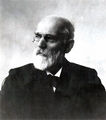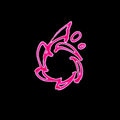Template:Selected anniversaries/November 23: Difference between revisions
No edit summary |
No edit summary |
||
| Line 3: | Line 3: | ||
||1553: Prospero Alpini born ... physician and botanist. He travelled around Egypt and served as the fourth prefect in charge of the botanical garden of Padua. He wrote several botanical treatises which covered exotic plants of economic and medicinal value. His description of coffee and banana plants are considered the oldest in European literature. Pic. | ||1553: Prospero Alpini born ... physician and botanist. He travelled around Egypt and served as the fourth prefect in charge of the botanical garden of Padua. He wrote several botanical treatises which covered exotic plants of economic and medicinal value. His description of coffee and banana plants are considered the oldest in European literature. Pic. | ||
File:Jean-André Lepaute.jpg|link=Jean-André Lepaute (nonfiction)|1720: Clockmaker [[Jean-André Lepaute (nonfiction)|Jean-André Lepaute]] born. He will be an innovator, making numerous improvements to clockmaking, especially his pin-wheel escapement, and his clockworks in which the gears are all in the horizontal plane. | File:Jean-André Lepaute.jpg|link=Jean-André Lepaute (nonfiction)|1720: Clockmaker [[Jean-André Lepaute (nonfiction)|Jean-André Lepaute]] born. He will be an innovator, making numerous improvements to clockmaking, especially his pin-wheel escapement, and his clockworks in which the gears are all in the horizontal plane. | ||
||1820 Isaac Todhunter born ... mathematician and author ... best known today for the books he wrote on mathematics and its history. | ||1820: Isaac Todhunter born ... mathematician and author ... best known today for the books he wrote on mathematics and its history. Pic. | ||
||1826: Johann Elert Bode dies ... astronomer known for his reformulation and popularisation of the Titius–Bode law. Bode determined the orbit of Uranus and suggested the planet's name. Pic. | ||1826: Johann Elert Bode dies ... astronomer known for his reformulation and popularisation of the Titius–Bode law. Bode determined the orbit of Uranus and suggested the planet's name. Pic. | ||
| Line 16: | Line 14: | ||
File:Johannes Diderik van der Waals.jpg|link=Johannes Diderik van der Waals (nonfiction)|1837: Theoretical physicist and academic [[Johannes Diderik van der Waals (nonfiction)|Johannes Diderik van der Waals]] born. He will win the 1910 Nobel Prize in physics for his work on the equation of state for gases and liquids. | File:Johannes Diderik van der Waals.jpg|link=Johannes Diderik van der Waals (nonfiction)|1837: Theoretical physicist and academic [[Johannes Diderik van der Waals (nonfiction)|Johannes Diderik van der Waals]] born. He will win the 1910 Nobel Prize in physics for his work on the equation of state for gases and liquids. | ||
||1844: Thomas Henderson dies ... astronomer and mathematician noted for being the first person to measure the distance to Alpha Centauri, the major component of the nearest stellar system to Earth, the first to determine the parallax of a fixed star | ||1844: Thomas Henderson dies ... astronomer and mathematician noted for being the first person to measure the distance to Alpha Centauri, the major component of the nearest stellar system to Earth, the first to determine the parallax of a fixed star. Pic. | ||
||1864: Maritime engineer Maxime Laubeuf born ... He was a pioneer in the design and building of submarines, and was responsible for a number of the innovations that led to modern submarine design. His work had a profound influence on the design of submersibles in the late nineteenth century and early twentieth century. Pic. | ||1864: Maritime engineer Maxime Laubeuf born ... He was a pioneer in the design and building of submarines, and was responsible for a number of the innovations that led to modern submarine design. His work had a profound influence on the design of submersibles in the late nineteenth century and early twentieth century. Pic. | ||
| Line 22: | Line 20: | ||
||1864: Friedrich Georg Wilhelm von Struve dies ... astronomer and geodesist from the famous Struve family. He is best known for studying double stars and for initiating a triangulation survey later named Struve Geodetic Arc in his honor. Pic. | ||1864: Friedrich Georg Wilhelm von Struve dies ... astronomer and geodesist from the famous Struve family. He is best known for studying double stars and for initiating a triangulation survey later named Struve Geodetic Arc in his honor. Pic. | ||
||1865: Edgar Lee Hewett born ... archaeologist and anthropologist whose focus was the Native American communities of New Mexico and the southwestern United States. He is best known for his role in gaining passage of the Antiquities Act, a pioneering piece of legislation for the conservation movement | ||1865: Edgar Lee Hewett born ... archaeologist and anthropologist whose focus was the Native American communities of New Mexico and the southwestern United States. He is best known for his role in gaining passage of the Antiquities Act, a pioneering piece of legislation for the conservation movement. Pic. | ||
||1869: Valdemar Poulsen born ... engineer ... wire recorder. | ||1869: Valdemar Poulsen born ... engineer ... wire recorder. Pic. | ||
||1874: Theodore Lyman born ... physicist and spectroscopist. He will make important studies in phenomena connected with diffraction gratings, on the wavelengths of vacuum ultraviolet light discovered by Victor Schumann and also on the properties of light of extremely short wavelength, on all of which he contributed valuable papers to the literature of physics in the proceedings of scientific societies. Pic. | ||1874: Theodore Lyman born ... physicist and spectroscopist. He will make important studies in phenomena connected with diffraction gratings, on the wavelengths of vacuum ultraviolet light discovered by Victor Schumann and also on the properties of light of extremely short wavelength, on all of which he contributed valuable papers to the literature of physics in the proceedings of scientific societies. Pic. | ||
| Line 38: | Line 36: | ||
||1905: Otto Stolz born ... mathematician noted for his work on mathematical analysis and infinitesimals. | ||1905: Otto Stolz born ... mathematician noted for his work on mathematical analysis and infinitesimals. | ||
||1907: Lars Leksell born ... physician and neurosurgeon ... invented radiosurgery. | ||1907: Lars Leksell born ... physician and neurosurgeon ... invented radiosurgery. Pic search: https://www.google.com/search?q=lars+leksell | ||
||1910: Octave Chanute dies ... civil engineer and aviation pioneer, born in France. He provided many budding enthusiasts, including the Wright brothers, with help and advice, and helped to publicize their flying experiments. At his death he was hailed as the father of aviation and the heavier-than-air flying machine. Pic. | ||1910: Octave Chanute dies ... civil engineer and aviation pioneer, born in France. He provided many budding enthusiasts, including the Wright brothers, with help and advice, and helped to publicize their flying experiments. At his death he was hailed as the father of aviation and the heavier-than-air flying machine. Pic. | ||
||1910: Hawley Harvey Crippen | ||1910: Hawley Harvey Crippen executed ... physician and murderer ... telegraph. Pic. | ||
||1912: Marshall Glecker Holloway born ... physicist who worked at the Los Alamos Laboratory during and after World War II. He was its representative, and the deputy scientific director, at the Operation Crossroads nuclear tests at Bikini Atoll in the Pacific in July 1946. Holloway became the head of the Laboratory's W Division, responsible for new weapons development. In September 1952 he was charged with designing, building and testing a thermonuclear weapon, popularly known as a hydrogen bomb. This culminated in the Ivy Mike test in November of that year. Pic. | ||1912: Marshall Glecker Holloway born ... physicist who worked at the Los Alamos Laboratory during and after World War II. He was its representative, and the deputy scientific director, at the Operation Crossroads nuclear tests at Bikini Atoll in the Pacific in July 1946. Holloway became the head of the Laboratory's W Division, responsible for new weapons development. In September 1952 he was charged with designing, building and testing a thermonuclear weapon, popularly known as a hydrogen bomb. This culminated in the Ivy Mike test in November of that year. Pic. | ||
Revision as of 04:35, 22 November 2019
1720: Clockmaker Jean-André Lepaute born. He will be an innovator, making numerous improvements to clockmaking, especially his pin-wheel escapement, and his clockworks in which the gears are all in the horizontal plane.
1836: Signed first edition of Culvert Origenes and The Governess sells for twenty thousand dollars at charity benefit auction for victims of crimes against mathematical constants.
1837: Theoretical physicist and academic Johannes Diderik van der Waals born. He will win the 1910 Nobel Prize in physics for his work on the equation of state for gases and liquids.
1924: Edwin Hubble's discovery, that the Andromeda "nebula" is actually another island galaxy far outside of our own Milky Way, is first published in The New York Times.
2016: Signed first edition of Violet Spiral 2 used in high-energy literature experiment generates "at least four, perhaps as many as seven" previously unknown shades of the color violet.




